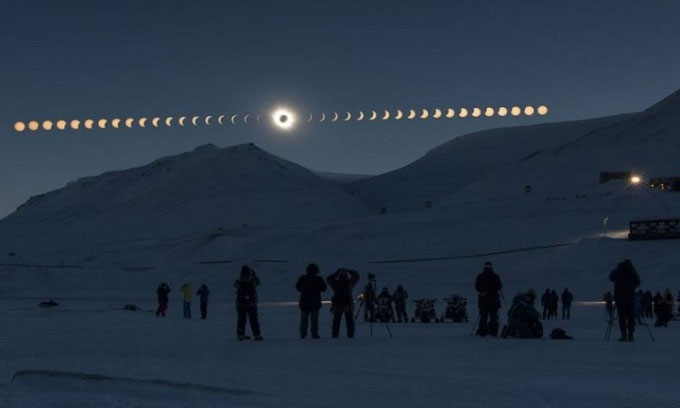NASA has announced that the only total solar eclipse of this year will occur on December 4, but it can only be fully observed from Antarctica.

Simulation of the phases of a total solar eclipse. (Photo: Earthsky)
The peak of the eclipse will occur at approximately 2:33 PM on December 4, according to Hanoi time, for observers near the edge of the Ronne Ice Shelf in Antarctica. People in certain locations in the Southern Hemisphere may witness a partial eclipse. The next total solar eclipse will take place on April 8, 2024, and will be widely observable in many areas of Canada, Mexico, and the United States.
A solar eclipse occurs when the Moon passes between the Earth and the Sun, casting a shadow on the Earth. In a total solar eclipse, the Earth, Moon, and Sun must be aligned in a straight line. The Sun is temporarily completely obscured by the Moon. The sky becomes very dark, and observers can see the solar corona, the outer atmosphere of the Sun, through the bright rim surrounding the Moon. Typically, the corona is hidden by the Sun’s overly bright surface.
A similar phenomenon is an annular solar eclipse, which occurs when the Moon does not completely cover the Sun, creating a bright red ring of light around it. The next annular solar eclipse will take place on October 14, 2023.
According to NASA, people in Saint Helena, Namibia, Lesotho, South Africa, South Georgia, the Sandwich Islands, the Crozet Islands, the Falkland Islands, Chile, New Zealand, and Australia can observe a partial eclipse at sunrise or sunset.


















































